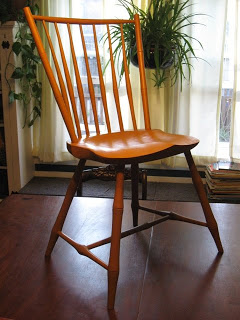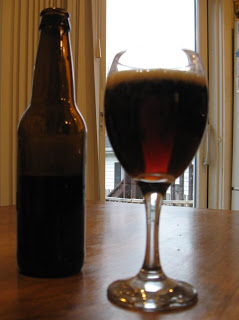I try to subscribe to the philosophy “Don’t Keep Score.” Don’t measure your progress and use the numbers as motivation; instead, be motivated because you enjoy what you’re doing. Depending on the endeavor, this doesn’t work for everyone, or even for me. And sometimes, it’s useful to keep score over the long run, without bothering yourself with the details as you go along.
I don’t use an odometer/speedometer (cyclometer) on my bicycle. I’ve had a number of problems when I tried using them. Sometimes they’d stop working, or measure results incorrectly (as much as I’d like to believe it, I don’t go 65mph down the hill through Schenley golf course). But the bigger problem is, if I have the numbers I do look at them: they motivate me too much. I pay attention to the numbers, instead of to enjoying myself.
I’m a very competitive person, but I am not very good at most sports (generally speaking, the ones with teams or dynamic movements). Combining these factors means that in a team or competition environment involving sports (and generally, keeping score), I often try to compete, but fail. Actually, I often hurt myself or make a fool of myself in the process. So, I generally avoid those situations.
This is one reason I don’t prefer organized group bike rides. I already have a hard time pacing myself, but when there’s someone going faster than me, I almost always feel compelled to try to catch up. (Of course the other reason I don’t prefer group rides is the whole “people” issue, but I’ll save that for another day.)
Although I don’t like numbers while I’m on the bike, I do generally like to get an idea of how far I’m riding in the long term. Some people mount their cyclometer in an inconvenient spot: it allows them to track their mileage, without letting them obsess over their current speed, maximum speed, average speed, cadence, heart rate, and/or power output (to name a few). Other folks prefer the good old fashioned Huret mechanical odometer to track their mileage (approximately) but not their speed.
But I don’t even go as far as tracking my annual mileage. At this point, my goal isn’t to increase my bicycle miles, but to decrease my car miles, and a cyclometer won’t help with that. I do have a general idea: at around 70 miles of commuting per week and additional recreational/errand rides on weekends, that gets me into the 3500-4000 mile per year range. I like to think it’s closer to 4000, but it doesn’t really matter. It’s a lot more miles than I drive, and enough that I need to consider regular bike maintenance; but not enough to get rid of my beer belly.
At work, we’re keeping store in a different interesting way: we’re participating in the “10,000 step challenge.” Employees wear pedometers to track their steps throughout the day for a period of 12 weeks, with the ultimate goal of increasing their steps to 10,000 per day (around 5 miles of walking) by the end of the 12 weeks. We’re split into teams, and the team with the most steps will win a massage and a free lunch or something like that.
For cyclists, they let us count steps with the pedometer while we’re on the bike. I seem to get around 500 steps or so per mile on the bike, compared to 2000 for walking. I’ve found a relatively good setup for this, but on occasion I get complete failure: if the pedometer opens itself up or shifts into the wrong place, it stops working. So more often than not, if I’m checking my steps, it’s to make sure the darn thing is working, not to motivate myself. (My current average is around 11,000, up from maybe 8000 the first week. The biggest variable is my weekend step count.)
Last year, for my longer bike rides, I started using a handheld GPS device mounted on the handlebars. I can upload complete topographic/road maps for the area I’m riding in, as well as my planned route. Or, I can just ride wherever I want, and when I’m finished, download the route onto the computer. I’ve found this to be really useful for long rides in unfamiliar territory. It’s a lot better than a map or a cue sheet and cyclometer for finding my way. But it does suffer from the “too much information” syndrome you get with cyclometers, so I tend not to use it regularly.
One of my favorite techniques for tracking shorter rides is to use Bikely. This web site provides a Google Maps based interface for exploring and editing cycling routes. You can draw a route manualy on the map, upload a GPS file, or even download someone else’s route and put it on your GPS to follow it. It can also show elevation maps for all routes, and generate cue sheets if the route maker provides turn information.
Often after taking an unplanned recreational route, I draw my route on Bikely when I get home. This lets me see how far I’ve gone, without keeping score while I’m on the road. For example, Sunday we had beautiful weather, so I rode a 30 mile or so loop around Pittsburgh. Although there were a few nice roads, overall the road choices weren’t that great: I should probably spend more time investigating the hills in Fox Chapel and Sewickley instead.
I think cyclometers can be very useful to motivate cyclists to “keep at it” early on, but it is easy to get sucked in and become a slave to the numbers if you aren’t careful. At some point, everybody’s numbers will stop going up, and you’d better hope you’ve stopped looking at them by then: if increasing numbers work as a motivator, then decreasing numbers may be a demotivator. In this case, it’s better to rely on your enjoyment of the activity as motivation, instead of the numbers.
 Hops like to grow up to 20 feet high or higher, ideally. Normal farm growing techniques recommend running 1-2 strings from each hops plant, with 1-3 bines running up each string.
Hops like to grow up to 20 feet high or higher, ideally. Normal farm growing techniques recommend running 1-2 strings from each hops plant, with 1-3 bines running up each string.

